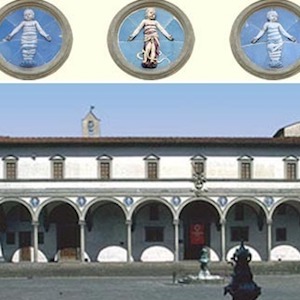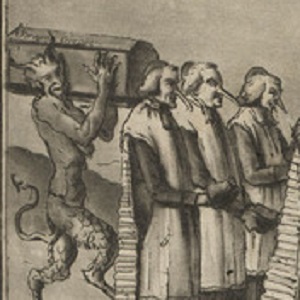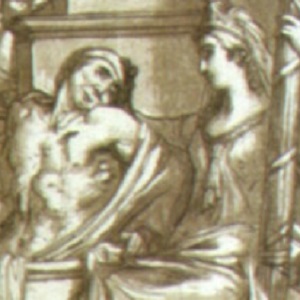Early Modern (1450 CE - 1800 CE)

Swaddled Children Terra Cotta Bas-Reliefs
These images of swaddled infants come from a series of 10 glazed terra cotta bas-reliefs known as the "bambini." Andrea della Robbia sculpted them between 1463 and 1466 to adorn the Ospedale degli Innocenti, or Foundling Hospital, in Florence, Italy.

Puppeteers Painting
This is an ink painting on a scroll by Hanabusa Itchô (born Taga Shinkô), a Japanese artist of the early Tokugawa period (1600–1868). Tokugawa artists typically used pen names and Itchô used several names at different times as an artist and poet.

Emperor Jahangir Weighing His Son Khurram in Gold
The finely detailed miniature painting in an album created for the Emperor Jahangir (reigned 1605–1627) of the Mughal Empire in India shows a ceremony initiated by Jahangir's father, Akbar the Great (reigned 1556-1605), Jahangir's father.

Refractory (Clergy) Going to the Promised Land
Many refractory clergy left France to join other detractors, as this print shows, or wishfully encourages. However, this is an ambiguous image, which leaves open the possibility that rather than joining foreign monarchies, the clergy are crossing the river leading to Hell.

Procession of Refractory Clergy
Of particular interest in this caricature of refractory clergy here are the long noses, traditionally used to caricature Jews, that suggest the refractory clergy were not of the people. This image shows resistant clergy marching in their last procession.

The Roman Aristocrat
The fattened clergyman and the well–bedecked nobleman go off unbothered while the figure in the foreground assesses carefully the value of a commoner. This complex image also includes a pig—likely a symbol for Louis XVI—with the cleric and the noble.

The Voracious Oath
This fascinating print is modeled on Jacques–Louis David’s Oath of the Horatii. In that famous painting, the artist sought to exemplify patriotic virtue by showing an austere father making his sons swear to defend Roman honor.

Robespierre Laid on the Table of the Committee of Public Safety
This Dutch engraving, based on a sketch by Berthault, shows Robespierre laid out on the table where his Committee of Public Safety did its work.

A Second Jean d'Arc
To those who considered Marat insincere and dangerous in his unrelenting populism, the true martyr was Charlotte Corday, who had come to Paris from Caen—a city then serving as a base for the federalist insurgency—apparently with the express intent of killing Marat.

In Memory of Marat, Friend of the People, Assassinated 13 July, 1793
A leading voice on behalf of greater popular participation and social policies that would benefit the poor, the journalist Jean–Paul Marat used his radical newspaper the Friend of the People to criticize moderation.